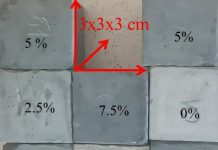
A new international study led by researchers at the Guangzhou Institute of Geochemistry in China has uncovered how carbon deep within the Earth plays a surprising role in shaping continents—and even forming diamonds.
Published in Science Advances, the study explores how carbon moves through the Earth’s mantle and how these movements influence the stability of ancient landmasses and the creation of precious gems.
The research team, working with international collaborators, focused on what happens when carbon from Earth’s surface gets pulled deep underground through the process of subduction.
Subduction occurs when one tectonic plate slides beneath another, carrying surface materials—including carbonates—into the Earth’s mantle.
The scientists wanted to understand what happens to that carbon when it reaches depths of 250 to 660 kilometers below the surface.
To do this, they conducted high-pressure experiments to recreate the extreme conditions of the deep mantle.
They studied how molten carbon-rich rocks, called carbonatite melts, interact with iron-containing mantle rocks under these conditions. The results showed two very different outcomes, depending on the temperature of the mantle.
In cooler mantle regions, known as “nonplume” environments, carbonatite melts become progressively reduced—a chemical process that results in the formation of diamonds.
These diamonds are stable and tend to stay locked in place deep underground.
Interestingly, their presence helps reinforce the strength of the surrounding rock, supporting the long-term stability of ancient continental cores known as cratons.
But in hotter mantle areas, typically found above rising plumes of heat, the same carbonatite melts react differently.
Instead of forming diamonds, the melts oxidize the surrounding mantle. This oxidation weakens the rock structure, making it more likely to break apart and sink—a process known as lithosphere delamination. These events can lead to changes at the Earth’s surface, such as land uplift and volcanic activity.
The scientists also compared the minerals produced in their lab experiments with tiny inclusions found inside natural diamonds from ancient cratons in Africa and South America. They found that the chemical fingerprints matched, confirming that the same processes happening in the lab also occur deep beneath the Earth’s surface.
Lead researcher Professor Yu Wang explained that the study helps us understand how carbon travels between the Earth’s surface and interior, and how this affects the development of continents over time.
It also gives scientists new clues about when and how diamonds form, and whether ancient continental areas will remain stable or eventually break apart.
This research sheds light on the powerful forces at work deep underground—forces that not only build continents but also create the world’s most prized gemstones.
Source: Chinese Academy of Sciences.



